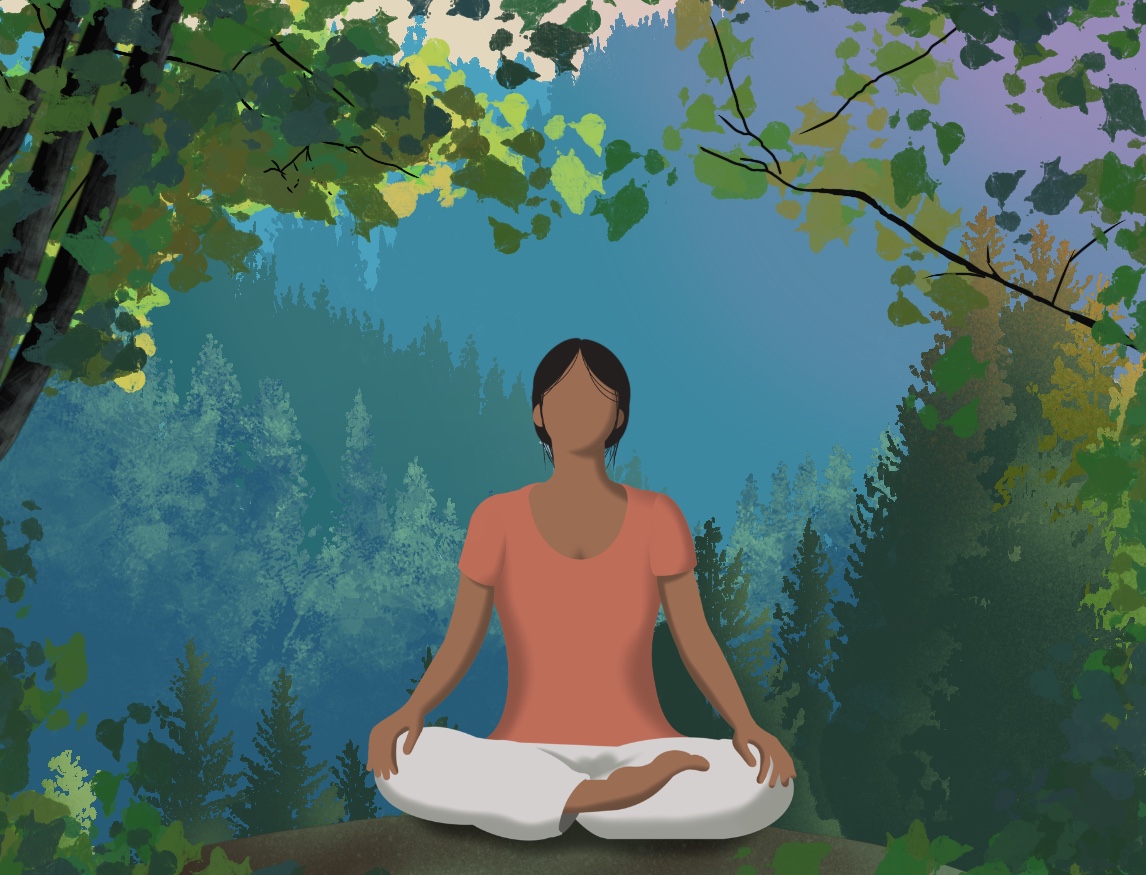The Benefits of Forest Bathing

Did you know that the average person spends about 90% of their time indoors? With statistics like that, it’s no wonder we’re facing what researchers call a “nature deficit disorder“. We’re spending less and less time outdoors, which may impact us in more ways than we know. As more people spend their lives in urbanized environments, scientists and environmentalists alike call for creative ways to encourage people to spend more time outside. One of those ways is a sort of mindful, walking meditation in woodland. Praised for its health benefits, forest bathing has begun to gain traction all around the world. Here, we’ll unpack what the practice entails, the science behind it, and how to get started.
What is Forest Bathing?
Shinrin-Yoku, otherwise known as forest bathing, is the Japanese practice of immersing yourself in nature. The practice was developed in the 1980s and was regarded as a form of nature therapy. It’s not a hike or a power walk through the forest, but rather, a slow and mindful stroll. This involves paying close attention to your surroundings and using all five senses to connect with the natural world. The main purpose of this practice is to harness the healing power of nature and use it as therapy for stress, anxiety and physical well-being.
How do you Practice Forest Bathing?
It’s important to note that you don’t necessarily have to practice forest bathing deep into the woods. Although the term may imply otherwise, forest bathing can actually be done in an urban park or even a trail in the suburbs- as long as you can find a quiet, green space, you can practice.
Mindful observation is key in forest therapy. As you walk through the forest, you should be engaging the senses to truly connect with your environment. This means asking yourself what you can see, what you can smell, and what you can hear. Embrace the sounds of rustling leaves, the sight of birds mid-flight, and the sensation of sunlight on your skin. Touching things around you like tree bark can also help you feel more in tune with your environment. Soak it all in and take a mental note of how you feel in that moment. It goes without saying that you should try to unplug from your devices to get the most out of your experience.
If you’re up for it, meditation or Tai Chi can be practiced while forest bathing. It is also possible to walk with a loved one or a guide, but the solo experience may be a better option if you need time for deep reflection.
Finally, wandering aimlessly is highly encouraged when engaging in this activity. Some of us tend to plan and overthink every little detail in our lives, stifling our spontaneity. Don’t be afraid to give up control this once, and simply allow your body to lead the way. This can look like sitting down for a while to absorb the view, or standing still in one spot for 15 minutes if that’s what feels right in the moment.
Why do People Practice Forest Bathing?
Many of us belong to societies that are fast-paced and preoccupied with productivity. We are often glued to our phones or too busy working, which can make leisure time outdoors a non-priority. Forest bathing can be a welcome reprieve from our busy lifestyles, as well as the hustle and bustle of city life. Time spent in nature is generally believed to boost creativity and elevate our mood, which can be helpful for coping with stress related to work or family life. A calming walk in the woods can nurture clarity – giving us the time and space to find solutions to our problems.
The notion that humans are hardwired to connect to nature is complex but fascinating. Our intrinsic connection to nature is believed to have developed throughout our evolutionary history. This means that our biology may explain why we seem to feel better and even happierwhen spending time in natural systems. This is sometimes referred to as biophilia; a term that describes the innate bond between human beings, nature and other forms of life.
It seems like humans also gravitate towards nature for its emotional benefits. A researcher from the University of San Francisco believes that being among trees and soaking in their oils encourages our bodies to release oxytocin. Oxytocin is known as the feel-good hormone that is released when we have human contact. In other words, forest bathing is akin to receiving a loving hug from mother nature herself!
What are the Health and Sleep Benefits of Forest Bathing?
Beyond the calming, mood-boosting effects of forest therapy, its health benefits also contribute to its growing popularity. Dr. Qing Li, a prominent figure in the forest therapy space, has conducted studies that seem to show that forest bathing can reduce both anger and stress. The doctor’s research has found that the practice lowers heart rate, and reduces stress hormones cortisol, adrenaline and noradrenaline.
Forest bathing is also believed to have a positive impact on the immune system. When breathing in the fresh forest air, we also breathe in airborne chemicals that plants and trees release to protect themselves against insects and germs. These antimicrobial essential oils are called phytoncides. When inhaled, they can boost the activity of Natural Killer cells that help our bodies fight off disease.
When it comes to sleep, a study concluded that participants who took a two-hour forest walk reported reduced anxiety, an increase in sleep time, and greater sleep quality.
So, what do you say? Will you be spending some time in nature this weekend? Remember, it can be as easy as spending time at your nearest park. If you do choose to give forest bathing a try, be sure to note how the experience felt. Take note of your sleep quality after your adventure. Reflect on whether you fell asleep faster or felt well-rested the morning after. If you enjoyed your walk but still have some trouble getting to sleep, consider taking Zenbev to help with winding down.
Happy exploring!


